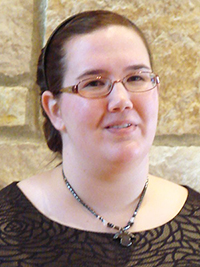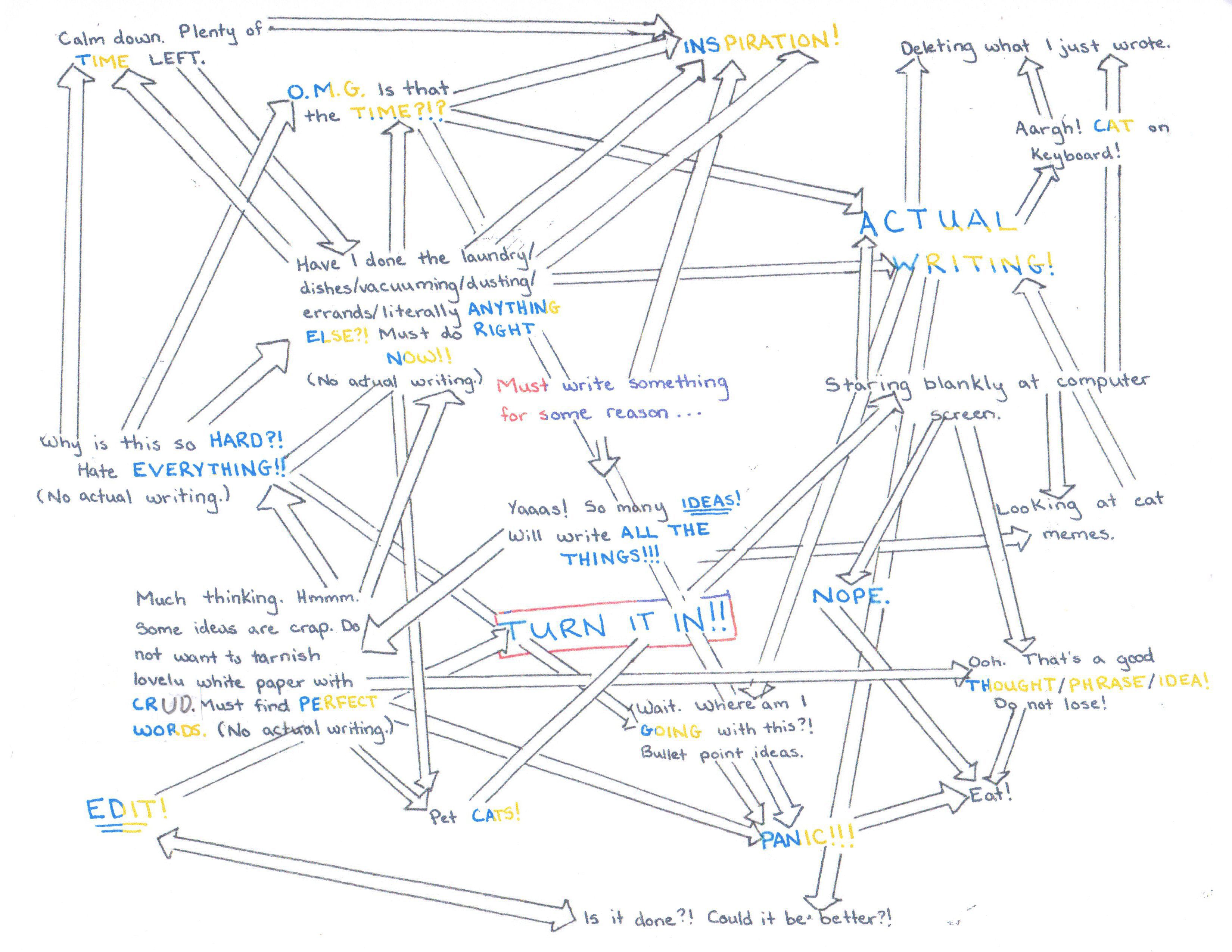The following are reflections on the writing processes of three writers: Chibuzo Petty, Karen Duhai, and Emily Hollenberg.
In two of the pieces, the authors use the phrase “shitty first drafts.” The phrase is not used by the authors stylistically or crudely. The phrase is in reference to a section from Anne Lamott’s 1994 book Bird by Bird.
Persistence – Chibuzo Petty’s Writing Process
For the past year, I have served as the Social Media Editor for Brethren Life and Thought, the Church of the Brethren’s academic journal. I previously served on the journal’s board and now solicit and edit the content published on our blog. (Each post is ~1,000 words; with new posts usually published weekly.) I also curate the content shared on our Facebook page. As a result, my writing has taken a back seat so I can better focus on reading and editing other’s writing. (I do have a poem and a few book reviews that will be published in our print journal this fall, though!)
Honestly, email is the writing genre to which the vast majority of my writing belongs.
Though I preach quite regularly, I am not a manuscript preacher. My sermons tend to be heavily dependent on my ability to performatively exposit Scripture. This choice in approach and tone certainly impacts my sermon-writing style. (Again, little “writing” takes place in this context.)
I find the concept of “waiting for the muse” rather interesting. That one could set aside a thought until later seems outlandish to me. That your mind might be still or clear enough for you to notice when the next great idea comes upon you is also perplexing in its elusiveness. For years, I have been in treatment for Obsessive Compulsive Disorder. I say that not in the flippant way our culture talks about ADD, OCD, and other similar disorders. I mean it in the “every aspect of my life is impacted by this illness in real, concrete terms” sort of way. My primary symptom is racing, intrusive thoughts. I obsess. I ruminate. I spend ungodly amounts of time thinking and rethinking and thinking some more. My condition means I am a slow writer (and reader for that matter). I stop and start a great deal, getting frustrated by the non-stop churning going on inside. Proofreading is a nightmare, seeming only to feed the beast within.
Further complicating things is my chronic physical illness impacting both my central nervous and musculoskeletal systems. My pain prevents me from staying in one spot long enough to get a good work rhythm going whether in bed, a chair, or at my standing desk. The pain’s severity also feeds my intrusive thoughts. The ease with which physical pain exacerbates my mental anguish never ceases to amaze me. My conditions’ impact on my central nervous system also leads to fatigue and minor challenges with memory – due in part to previous seizures. All of this makes the writing process more complicated. More irritating. More
draining.
When I think about my writing process, I think of persistence. The writing process is about drive. Commitment. Shitty first drafts. Over-analyzing. And, giving myself the grace to simply stop.
Absolute Chaos – Karen Duhai’s Writing Process
I was an English major as an undergrad and want to return to writing as a creative outlet. That said, I am also a bit weary of words. Who hasn’t been worn out by the torrent of arguments and memes and insensitive comments on social media? But I also believe that words are powerful and that as ministering people the things we say carry weight and we SHOULD be engaged with what is happening in the world. Learning to engage in a sensitive and conscious manner, though, is crucial.
As for my writing process, I have this vision of a very calm, beautiful writing process where there are careful reflections, multiple drafts, outlines, and, you know, birds chirping and small furry animals doing my housework. The reality is that it’s pretty much madness. It’s a combination of excitement and enthusiasm but also absolute dread and the perpetual question, “Why did I want to do this again?!” To help illustrate this point, I’ve created a flow chart of sorts which can be seen below. Enjoy.
If I Can Fail at Writing, I Can Fail at Bullet Journaling Too – Emily Hollenberg’s Writing Process
I have tried three times to bullet journal. Once in September of 2016 when I began my journey at Bethany, second around Christmastime when I decided that I just needed a new bullet journal layout, and third when I decided that instead of journaling about my mental health, I should probably be keeping better track of my eating habits. All three times I bought fancy colored pens, brand new Moleskine journals, a new ruler, and stencils for my icons. I tried to make a layout that would work for me as well as look beautiful. And of course, it never looked beautiful like bullet journal pictures did on the internet.
This is the largest problem that I face while writing, such as Anne Lamott faces the voices that she drops into mason jars after she turns them into mice. I begin to write, and then I think to myself, Is this as good as my favorite novel? Absolutely not. Can I even see my novel on a shelf at Barnes and Noble? Would anybody even read it besides my fiance? When I saw my bullet journals weren’t beautiful, I stopped writing in them, even though I had told myself that my journaling was supposed to be the real me, not the Instagram me. I wanted the beautiful Instagram layout where I suddenly knew how to write in calligraphy. I want my novels to be the same way.
I’m at the stage that Barton and Howard describe as not being ready to engage with an audience. I’m on the Lamott shitty first draft stage. I’m just still accepting that it’s so.
I’ve talked about this in writing classes before: in college, I had a professor who had a writing habit so deep and profound that it broke up his first marriage. I worked him with closely during my undergrad time and it gave me an incredibly messed up idea about writing processes. I figured that if I didn’t lose my boyfriend during my process, I wasn’t doing it right. Maybe I should forgo eating. Stay up until four in the morning writing. Quit my job and become a hermit. Walk around in curtain drapes singing until my writing can flow out of me like a dirty river. Having worked with someone like this for so long, it’s made me always feel like I don’t have a writing process.
But I do. I take time out of my day to work on my novel. I work in Google docs and I comment on sections for myself to come back to later. I try to engage with my perceived reader. And I tell myself that even if I don’t want to write, even if I don’t have a magical muse that doesn’t exist, I have to get something down, and it’s fine if it’s shitty.
That’s writing. And I’m not failing at it.
Friends, attached is my daily writing process as a bullet journal entry. You better believe that I spent four hours on it making it Instagram worthy.
 Karen Duhai is the receptionist and accounts payable specialist at Bethany Theological Seminary. An MDiv graduate of the seminary, Karen is also currently studying in the seminary’s MA program. Karen has held a variety of ministerial leadership positions in the Church of the Brethren and beyond including serving as a BVSer in Northern Ireland, Middle Pennsylvania District Youth Coordinator, and Program Director of Girls Inc. of Wayne County, Indiana.
Karen Duhai is the receptionist and accounts payable specialist at Bethany Theological Seminary. An MDiv graduate of the seminary, Karen is also currently studying in the seminary’s MA program. Karen has held a variety of ministerial leadership positions in the Church of the Brethren and beyond including serving as a BVSer in Northern Ireland, Middle Pennsylvania District Youth Coordinator, and Program Director of Girls Inc. of Wayne County, Indiana.
 Emily Hollenberg lives and works in Fort Wayne, Indiana where she works in the front office of Memorial Park Middle School and coaches for USA Swimming. Emily attends Beacon Heights CoB and is in Bethany’s Theopoetics and Theological Imagination Graduate Certificate Program.
Emily Hollenberg lives and works in Fort Wayne, Indiana where she works in the front office of Memorial Park Middle School and coaches for USA Swimming. Emily attends Beacon Heights CoB and is in Bethany’s Theopoetics and Theological Imagination Graduate Certificate Program.
Image Credits: Karen Duhai and Emily Hollenberg



